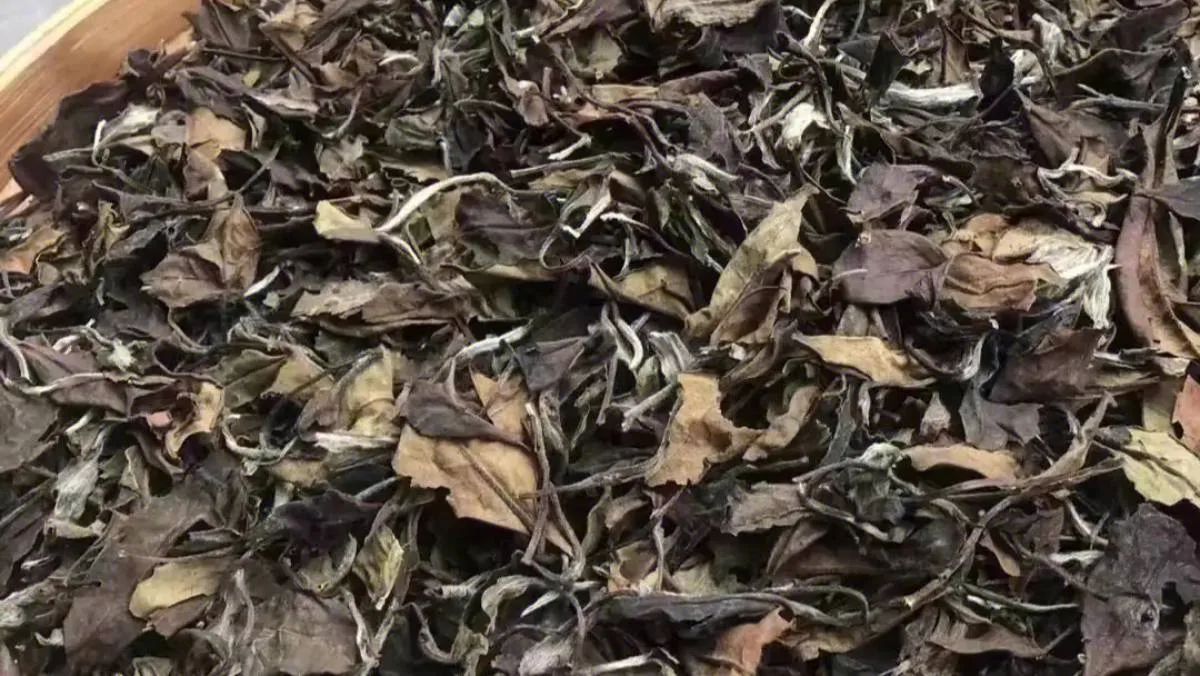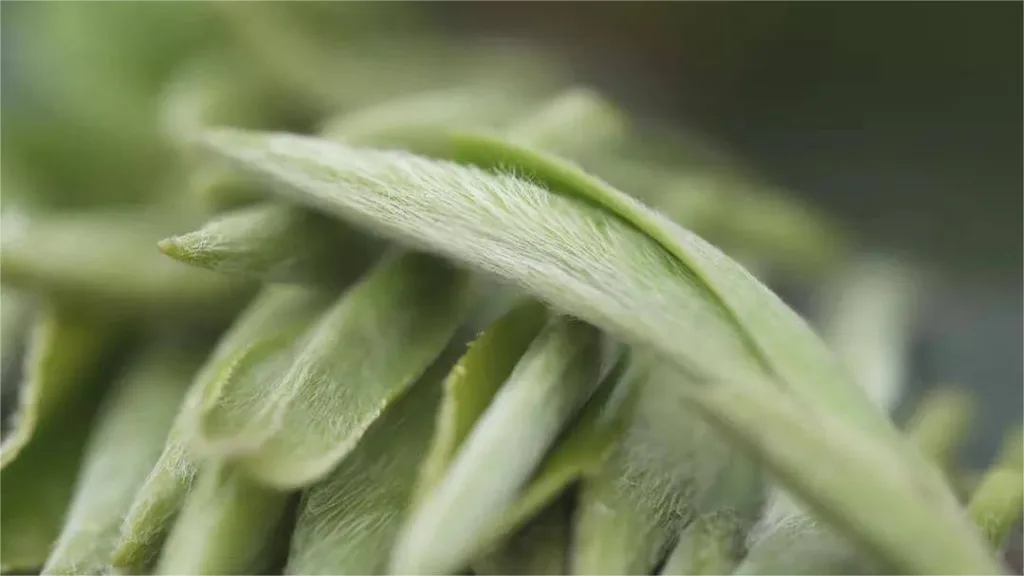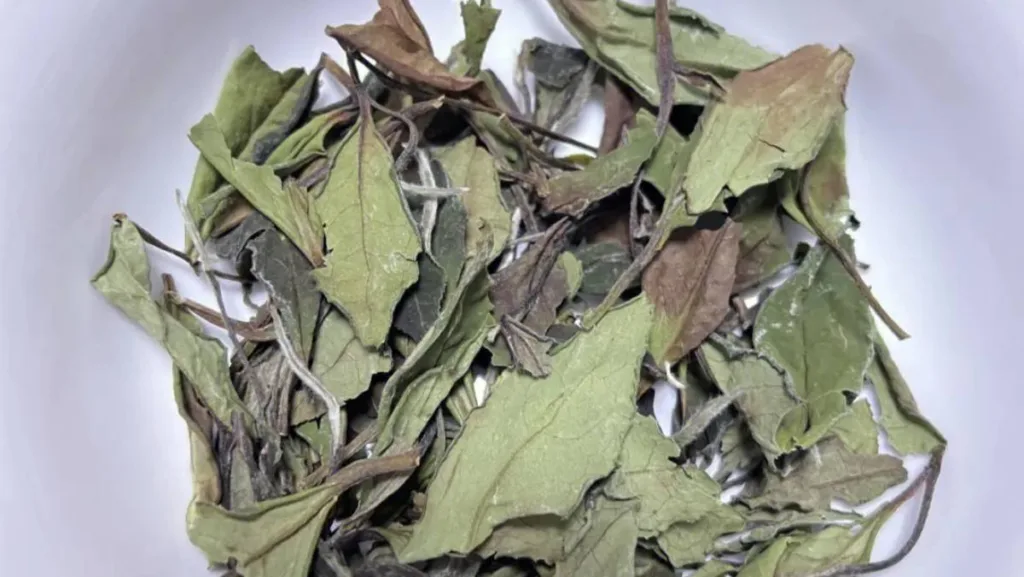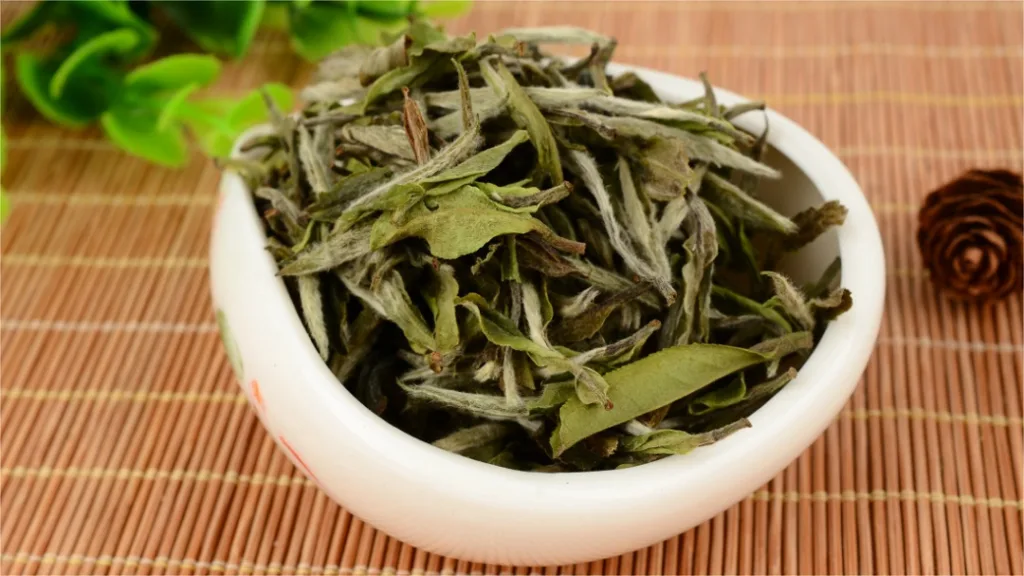Gong Mei tea, also known as Shou Mei, is a member of the six major tea categories in China and belongs to the white tea family. It is primarily produced in various regions in Fujian, such as Songxi County, Zhenghe County, Jianyang City, Jianou City, and Pucheng County, with the majority of production taking place in Nanping City. Gong Mei tea stands out as one of the highest-yielding white teas, accounting for more than 50% of the total white tea production.
Gong Mei is crafted from the tea buds and leaves of the Cai Cha tea tree. This distinguishes it from Dabai tea, made from the buds and leaves of Fuding Large White and Zhenghe Large White tea trees. In the past, Cai Cha’s tea buds were used to create various teas, including Baihao Yinzhen (Silver Needle). However, as time progressed, Dabai became the primary choice for producing Baihao Yinzhen and Baimudan, while Cai Cha’s tea buds found their calling in creating Gong Mei.
History
White tea is a unique specialty of Fujian Province, with production areas in Jianyang City, Zhenghe County, Songxi County, and Fuding City. White tea was first mentioned in the book “Da Guan Cha Lun” by Zhao Ji, the Emperor Huizong of the Northern Song Dynasty. The “Jianou County Chronicles” also record “white tea, produced in the West District and Zixi (now Zhangdun Town in Jianyang City).”
Zhangdun Town in Jianyang City, which neighbors Songxi, Zhenghe, Pucheng, and Jianou, is a region with a rich tea-producing history. The town boasts rolling hills, meandering streams, abundant rainfall, and lush tea bushes. Local farmers have mentioned that tea leaves are harvested and subjected to “wilting and drying,” which imparts a cooling and detoxifying effect. This led to the treatment of conditions like toothache and measles, as well as the practice of sun-drying or roasting fresh tea buds and leaves. This primitive process is considered the origin of white tea. The characteristic white downy hairs of the tea leaves resemble the eyebrows of a venerable immortal, which is why locals affectionately call it Shoumei tea.
In 1984, the white tea produced in Zhangdun Town received the honor of being named a famous Chinese tea at the tea quality evaluation event in Hefei. Subsequently, the Zhangdun Town government registered the “Gong Mei” trademark for use by several local tea factories. This name recognition has led to the usage of the Gong Mei label, and it is now considered a premium tea variety, with its quality surpassing Shoumei white tea in places like Fu’an.
Brewing Method
Before you brew Gong Mei tea, some preparations are essential:
- Tea Selection: Choose high-quality Gong Mei tea characterized by one bud and two leaves that are freshly opened. Look for tea leaves that are bright green with a touch of golden yellow, a clear, fresh aroma, a fine and uniform appearance, and a slight plumpness.
- Water Selection: For brewing Gong Mei tea, water from the source of the Huangpu River within the region is the best choice. Since Gong Mei tea leaves are tender and thinner, the water temperature should not be too high, generally around 80-85°C.
- Tea Ware: For brewing Gong Mei tea, transparent glass cups or glass gaiwans are typically used. Using glassware allows you to fully appreciate the tea leaves as they unfurl and the unique characteristics of their white veins amid the green leaves. In addition to the brewing cups, you should have other tea accessories ready, including a glass kettle, a water vessel for observing, a natural bamboo tea tray, tea saucers, tea tongs, tea needles, tea towels, and white porcelain drain pans.
The steps to brew Gong Mei are as follows:
- Prepare the Utensils: Display each piece of the equipment you will be using one by one.
- Prepare the Water: Pour boiling water into the glass kettle and set it aside.
- Observe the Water: Take water from the source of the Huangpu River and pour it into the water observing vessel, then insert fresh tea leaf branches. This clean and clear spring water gives a dynamic sense of the tea leaves floating within it.
- Appreciate the Fresh Leaves: The fresh leaves of Gong Mei resemble orchids with their translucent, jade-white leaf flesh and emerald green veins.
- Warm the Cups: Pour a small amount of hot water into the tea cup, holding it with both hands, gently rotate the cup, then pour the water into the tea tray.
- Place the Tea: Use a tea needle to take a small amount of Gong Mei and place it in the tea tongs. Add around 3g of white tea to each cup.
- Rinse and Soak: Use the water to gently rinse the tea leaves and let them begin to unfurl.
- Aromatic Pre-steeping: Hold the base of the cup with your left hand and support it with your right, gently turning it clockwise. This allows the tea leaves to absorb moisture, fully release their aroma, and pre-steep for about 0.5 minutes.
- Brew: Use the method of rotating the cup while pouring water to appreciate how the tea leaves move up and down in the cup. Control the amount of water, ideally filling about two-thirds of the cup. After brewing, let it sit for 2 minutes.
- Serve the Tea: Present the freshly brewed Gong Mei tea to your guests.
- Enjoy the Tea: When savoring Gong Mei tea, start by smelling the aroma, then observe the color of the liquor and the tea leaves floating in the cup, reminiscent of orchid petals. Finally, take small sips, and you’ll find the taste to be fresh, sweet, and leaving a delightful aftertaste.
- Examine the Leaf Bottom: Gong Mei stands out with its translucent leaves and emerald green stems. Observing the leaf bottom reveals the graceful posture of the tea leaves in the tea tray.
- Collect the Utensils: After guests have enjoyed the tea, gather the utensils and bid them farewell.
Health Benefits
Gong Mei tea offers various health benefits, contributing to overall well-being:
- Anticancer and Cooling Effect: Gong Mei contains special compounds that can boost the immune system in liver cancer patients and help alleviate symptoms of heat-related illnesses. It has an anticancer effect and can effectively cool the body.
- Rich in Antioxidants: Gong Mei, with its minimal processing, retains more nutrients. It has a higher content of tea polyphenols, which act as natural antioxidants. They enhance the immune system and protect the cardiovascular system.
- Promotes Weight Control: Gong Mei contains essential active enzymes that promote fat metabolism and help regulate insulin secretion. It can also break down excess sugar in the bloodstream, promoting blood sugar balance.
- Cooling and Detoxifying: Gong Mei is rich in various amino acids and has a remarkable ability to reduce heat, relieve summer heat, and detoxify the body. It also boasts strong antibacterial properties, contributing to oral cleanliness and health.
In summary, Gong Mei tea, a product of Fujian’s rich tea tradition, offers a delightful taste, vibrant aroma, and numerous health benefits. Whether you appreciate its mild flavor or seek its therapeutic qualities, Gong Mei tea is a treasure waiting to be enjoyed.



